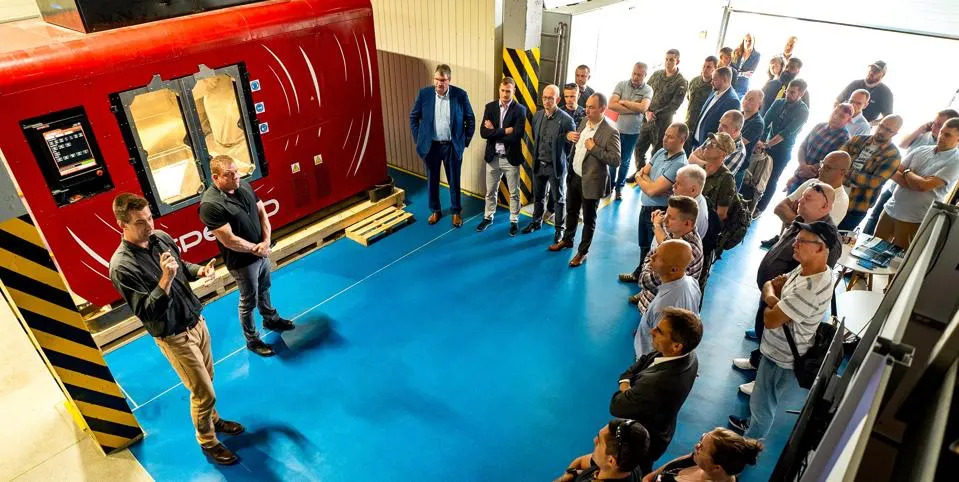The Australian company handed over seven WarpSPEE3D 3D Metal Printers to the Armed Forces of Ukraine
3 October, 2023 The process of printing a metal part. Photo credits: SPEE3D The Australian company Spee3D has supplied the Ukrainian Armed Forces with seven WarpSPEE3D 3D Metal Printers.
Forbes reported on this. Ukrainian soldiers were trained to work with printers in the Polish village of Jasionce, near the city of Rzeszow. It is reported that a little over ten soldiers were involved in the training.
Training 12 hours a day for 15 days, the Ukrainians, which included career soldiers and newly drafted engineers conscripted especially for this program. "There's a big difference when you're training someone for preparedness versus training someone when the war drums are banging. This is the first time I've been involved in additive manufacturing training when the students' lives were literally at risk," said Chris Harris, Spee3D's vice president of defense.
Steven Camilleri, the co-founder of 3D printer maker Spee3D was among the company's key employees involved in training the soldiers.
 WarpSPEE3D printer demonstration in Poland. Photo credits: SPEE3D
WarpSPEE3D printer demonstration in Poland. Photo credits: SPEE3D
The classroom and practical work covered everything from five-stage engineering design theory and nine-stage risk management process to metallurgy and operating the printers themselves. It is noted that the entire training course was translated into Ukrainian.
"These guys were getting a three-year degree course within two weeks. We worked to get the absolute most out of every hour. They were so inquisitive and eager to learn, and the level of questioning was really quite high.
They would have worked 20 hours a day." the company said. The printer's job is to quickly produce critical parts for the repair of various equipment.
 A wrench printed in less than an hour. Photo credits: SPEE3D
A wrench printed in less than an hour. Photo credits: SPEE3D
Each printer reportedly costs about one million dollars.
They are highly mobile due to the placement of the entire mechanism in a standard ISO container. "When you have a hinge on a troop carrier that's broken, and the 400-kilogram door won't stay open, that's a problem," says Calum Stewart, who helped lead the Poland training program for Spee3D.
 The container-size version of the WarpSpee3D. Photo credits: SPEE3D
The container-size version of the WarpSpee3D. Photo credits: SPEE3D
Both Harris and Stewart are former members of the military themselves with backgrounds in equipment maintenance and engineering, so they know what the Ukranians will face in the field.
At the beginning of September, Militarnyi reported that the United States had handed over industrial 3D printers to Ukraine.
Printing technology
Spee3D printers use a method of metal 3D printing called cold spray additive manufacturing, which is particularly applicable to frontline environments, as it doesn't use lasers or gases, like other metal 3D printing technology. Instead of melting metal, this method uses kinetic energy to bond metal particles together in a solid state to create a final part. The WarpSpee3D is also extremely fast and energy efficient.
It can build large parts up to 1 meter in diameter or 40 kg in weight in several metals.
Cold spray AM can also repair and coat metal parts, essentially spraying and bonding metal onto an existing part, which is also used to add additional shapes or features.